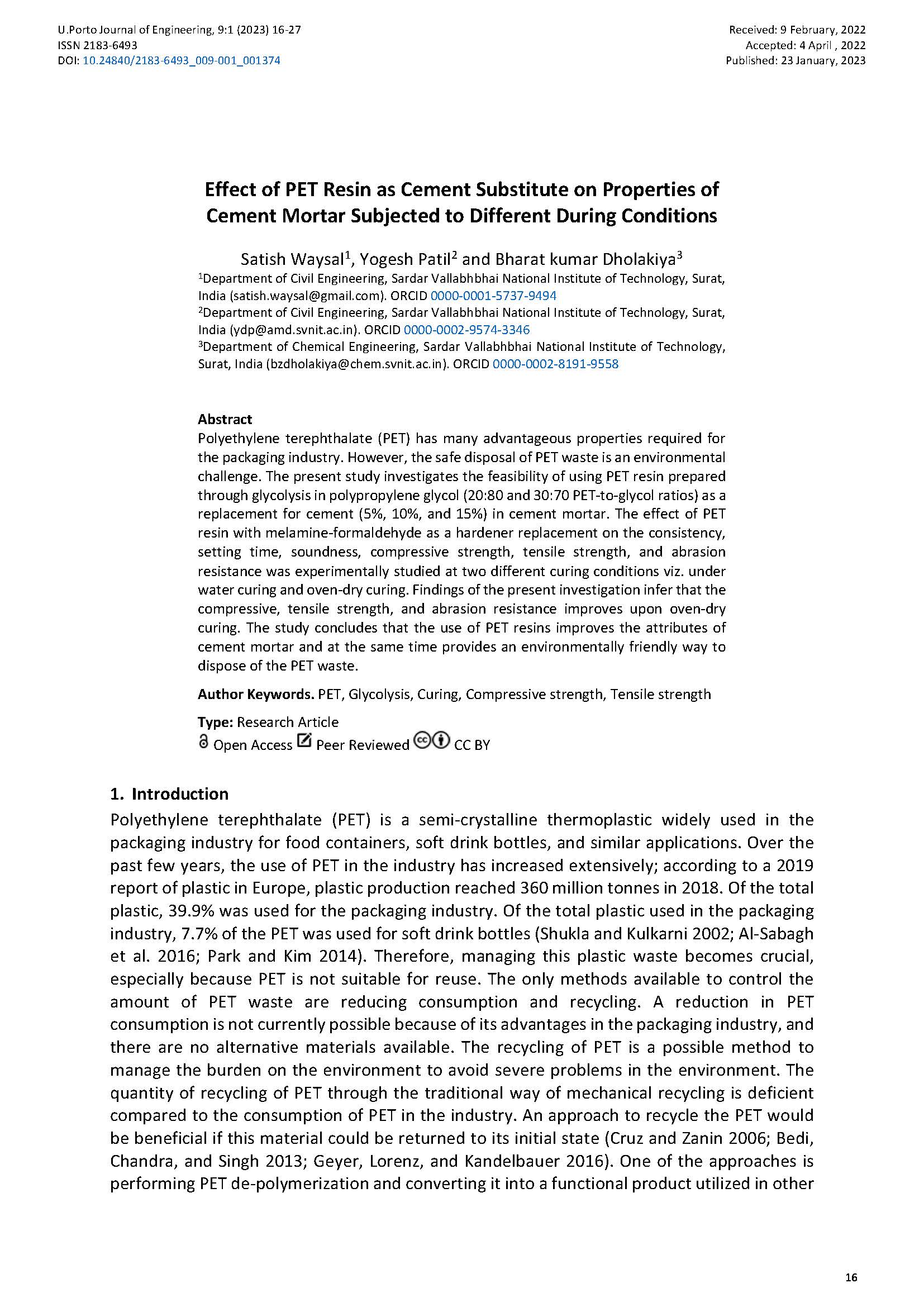Effect of PET Resin as Cement Substitute on Properties of Cement Mortar Subjected to Different During Conditions
Main Article Content
Abstract
Polyethylene terephthalate (PET) has many advantageous properties required for the packaging industry. However, the safe disposal of PET waste is an environmental challenge. The present study investigates the feasibility of using PET resin prepared through glycolysis in polypropylene glycol (20:80 and 30:70 PET-to-glycol ratios) as a replacement for cement (5%, 10%, and 15%) in cement mortar. The effect of PET resin with melamine-formaldehyde as a hardener replacement on the consistency, setting time, soundness, compressive strength, tensile strength, and abrasion resistance was experimentally studied at two different curing conditions viz. under water curing and oven-dry curing. Findings of the present investigation infer that the compressive, tensile strength, and abrasion resistance improves upon oven-dry curing. The study concludes that the use of PET resins improves the attributes of cement mortar and at the same time provides an environmentally friendly way to dispose of the PET waste.
Downloads
Article Details

This work is licensed under a Creative Commons Attribution 4.0 International License.
Authors who publish with this journal agree to the following terms:
- Authors retain copyright and grant the journal right of first publication with the work simultaneously licensed under a Creative Commons Attribution License that allows others to share the work with an acknowledgement of the work's authorship and initial publication in this journal.
- Authors grant the journal the rights to provide the article in all forms and media so the article can be used on the latest technology even after publication and ensure its long-term preservation.
- Authors are able to enter into separate, additional contractual arrangements for the non-exclusive distribution of the journal's published version of the work (e.g., post it to an institutional repository or publish it in a book), with an acknowledgement of its initial publication in this journal.
- Authors are permitted and encouraged to post their work online (e.g., in institutional repositories or on their website) prior to and during the submission process, as it can lead to productive exchanges, as well as earlier and greater citation of published work (See The Effect of Open Access).

